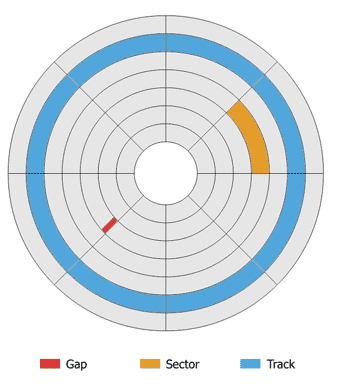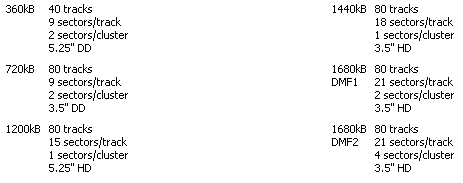 |
bookmark this page - make qweas your homepage | |
| Help Center - What's New - Newsletter - Press | ||
| Get Buttons - Link to Us - Feedback - Contact Us |
| Home | Download | Store | New Releases | Most Popular | Editor Picks | Special Prices | Rate | News | FAQ |
|
|
Floppy Image 2.3.2 - User Guide and FAQScreenshots - More DetailsHow does Floppy Image read a disk Floppy Image reads a disk track by track. Since Floppy Image reads a disk in this way it doesn't care about invisible files, filesystems or bootsectors as long as the floppy controller in the floppy drive supports the format of the disk. Amiga floppy disks are not compatible with PC floppy controllers and will therefore never be supported. Consider the image below, which shows the surface of a floppy disk (or a hard drive platter for that matter). The disk rotates around its center. The blue in the image outlines one track, the yellow one sector, and the red one gap. The gaps make up one sector and the sectors make up a track. A disk can have a different number of each of these, which together describes the disk's geometry. 
A floppy drive that reads this disk usually reads one track on one side and then the same track on the other side. The different sides of the disk are often referred to as heads. The chunk of data that is read each time a disk request is performed is called a cluster. Each cluster is made up of one or several sectors. Each sector contains more than just the data itself like ID information, synchronization fields, error correcting code, servo information, all of which we will not go any further into at this point. What are the specifications for the different formats? 
Frequently Asked Questions - Floppy Image
Screenshots - More Details |
|
Search -
Download -
Store -
Directory -
Service -
Developer Center
© 2006 Qweas Home - Privacy Policy - Terms of Use - Site Map - About Qweas |

